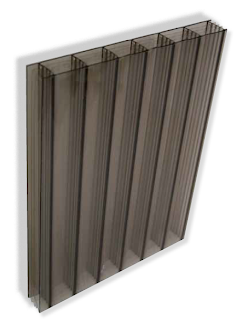The chart above would make water the holy grail of thermal storage. But I'm still looking for a complete equation that will
show me how to build a balanced system that will take advantage of all
the energy the solar collectors deliver. I feel that it is important to consider the coefficient of transfer aka conductivity. I'm guessing that water has the best characteristics of both, but it has to transition through some sort of pipe.. Maybe I'm just making this harder than it needs to be.
.
As an example of what I'm saying. How effective would it be to put 100000 sq ft of solar collector on Lake Superior? Not very... Also the transfer rate must be considered. A material that can hold a million BTU is not effective if it can't transfer that energy back out.
Everything I read is so reticent about the design procedure. Some questions I still have are:
- What's the optimal relation between the size of the collector and the storage?
- What's the optimal flow rate through the system and
- What should the diameter and length of the pipes be?
Original Post
- 2012-01-06
I'm exploring wet sand thermal storage. This drawing shows tubes which would carry the air from a solar collector through wet sand in a 3'x3'x12' box.
The ends of the pipes terminate inside of a 6" manifold on each end.
I need to do the math, but by comparing this system to others I estimate that if a 25F differential is attainable, it would store about 50,000 BTU of useable heat.
I have calculated that the night time losses will be about 15,000 BTU/Hr if the outside temperature drops to 20F, so I may need to make the system a bit larger, but this does not account for the thermal mass of the 400 gallon aquaponic system with 3/4 yards of gravel, which I will hold at 70F with an electric tank heater. Hopefully the solar system will significantly reduce the requirements of the electric heater. and provide a buffer in case of electric failure.
I'll add to this post as I figure out more of the design, and requirements of the entire system. But these raw numbers seem to indicate that the environment would be controlled even on the coldest nights.
Heat in the Summer is also a concern, but an evaporation cooler will be able to maintain the air at less than 90F, and the thermal storage could be cooled during the night. A 3/4" PEX pipe could be embedded in the cool sand and used during the day too keep the tanks cool, but the nighttime Summer temperature differential is not as large and may not provide a significant advantage. I will continue look for answers, but after reading about
this simple solar stock tank, I feel quite certain this design will work.
One of the problems I see with this design is the coefficient of heat transfer through the wall of the tubes.
In an effort to avoid this I have another design I want to run the
numbers on. The idea is to make stacking 16x16x8 Thermal Storage Blocks out of
concrete.
Update 2012.01.08
I've had an idea.
To increase the
conductivity and coefficient of thermal transfer in the Thermal Storage
Blocks; metal filings could be added to the concrete... Just spinning my
brain cells. ;-)
---
To make these blocks PVC pipe could be wrapped in wax paper and placed in a form. Concrete would then be poured into the form and later when the concrete has cured, the PVC pipes and wax paper would be removed.
These blocks could be stacked to create the thermal mass, and the holes would provide direct contact for the air arriving from the solar collectors. I suppose ordinary cement blocks could be used, but these blocks would be engineered with less air space, and more concrete for a greater storage capacity per cubic meter.
I don't know if there is any advantage to wet sand over dry concrete, but one other advantage I see to the blocks is that construction would be simpler because the manifold would not have to be water tight.















